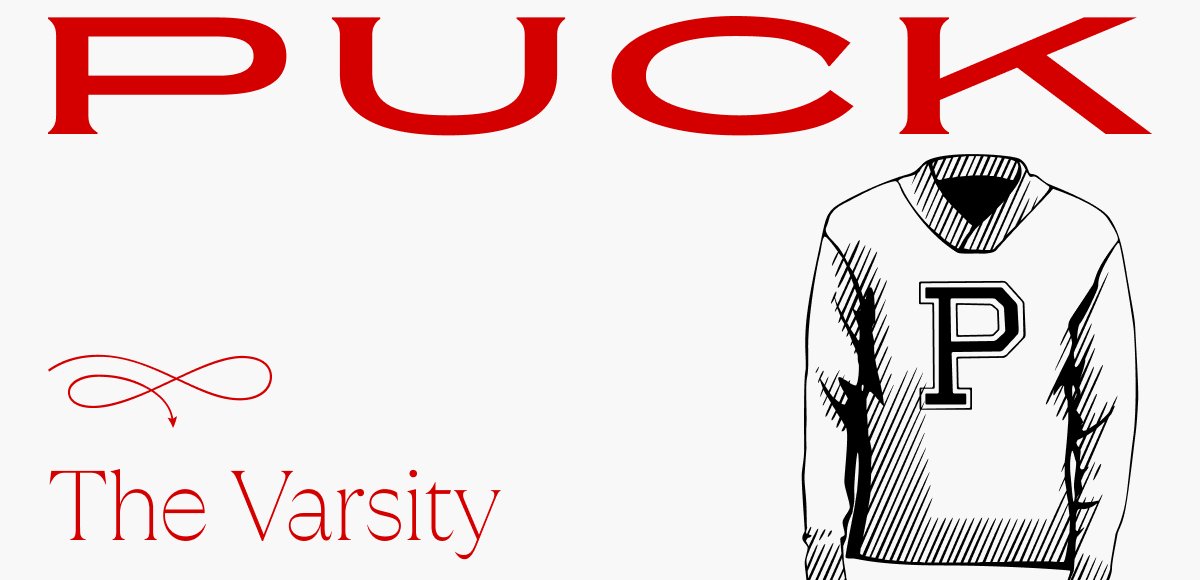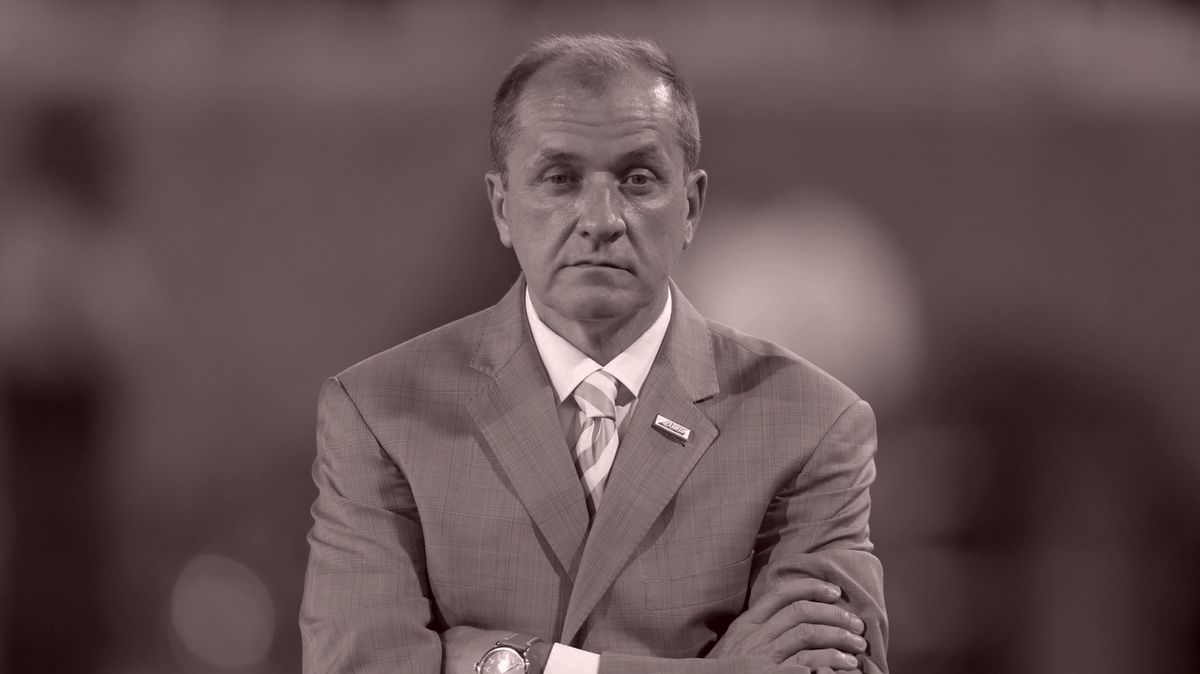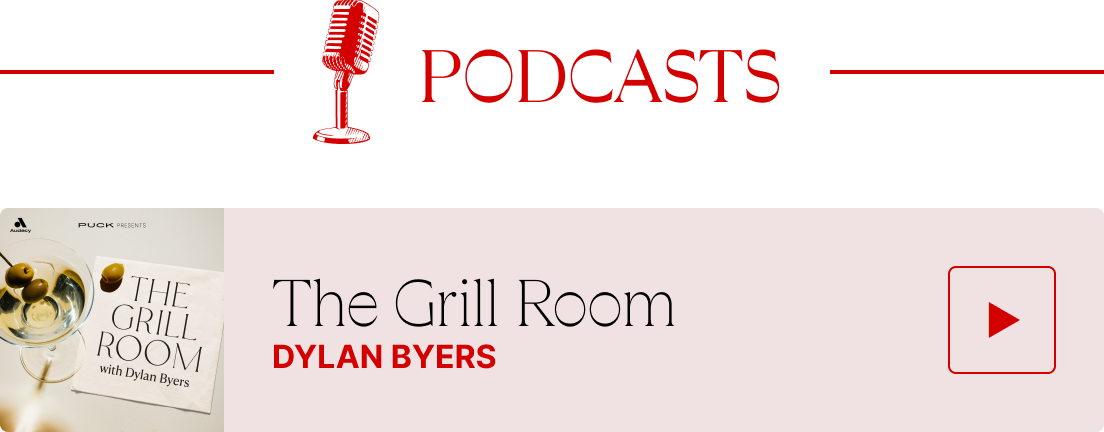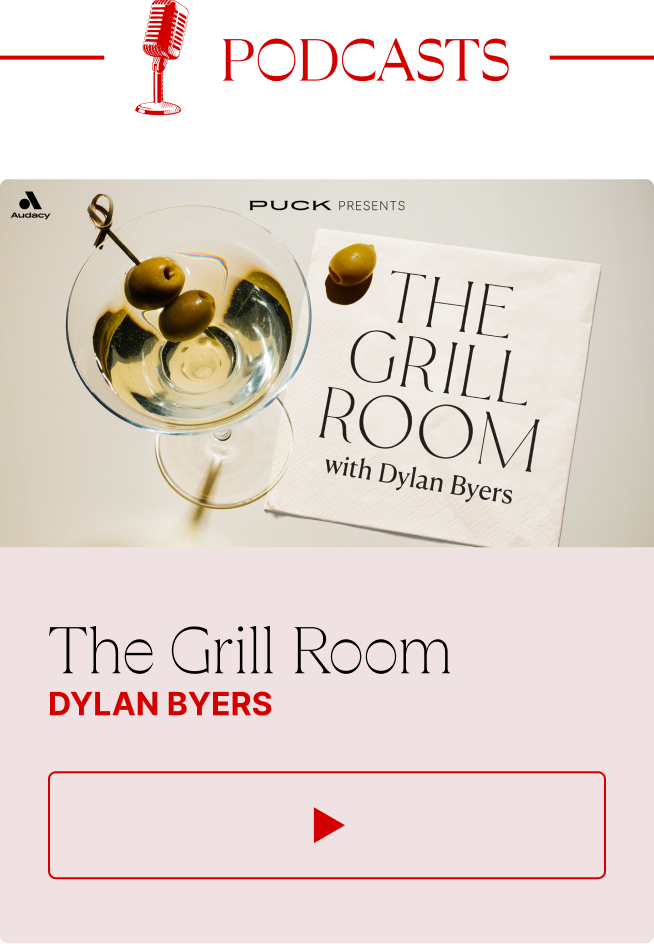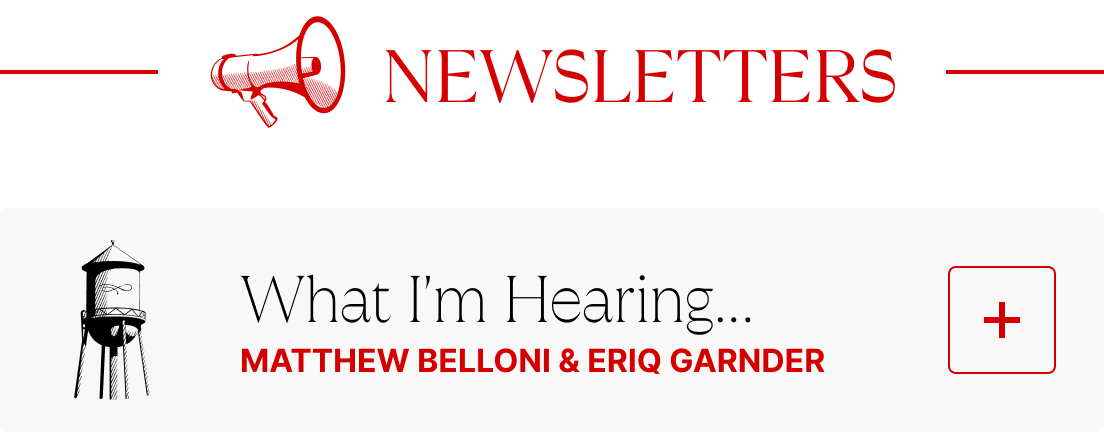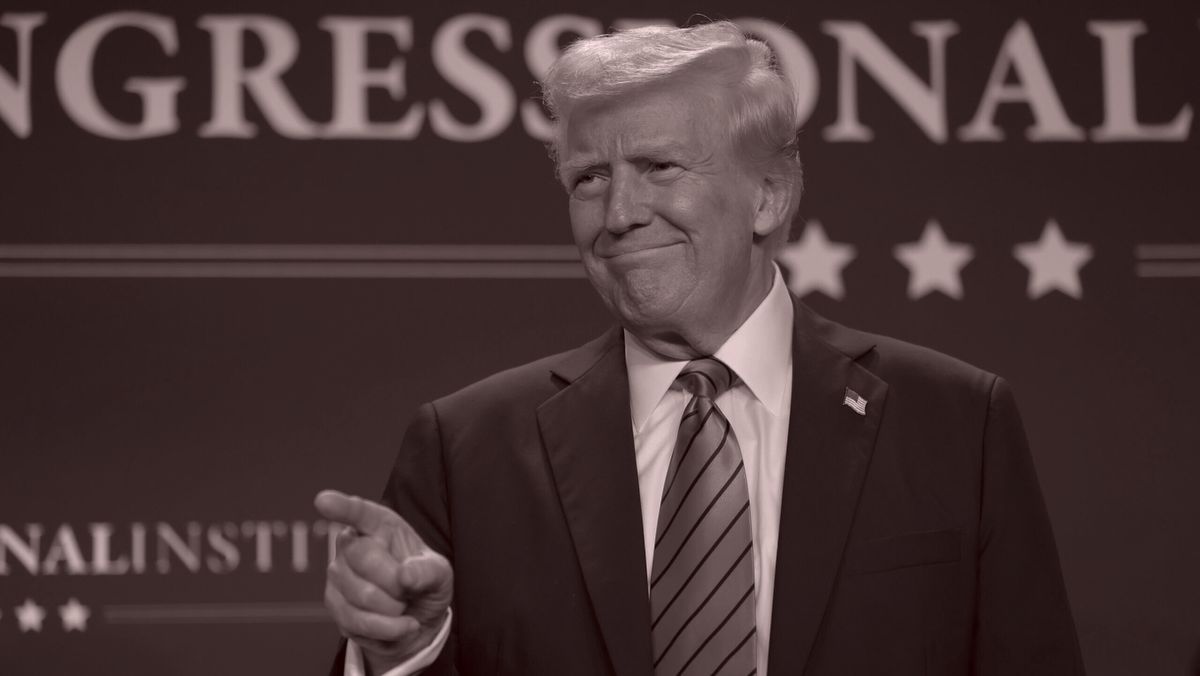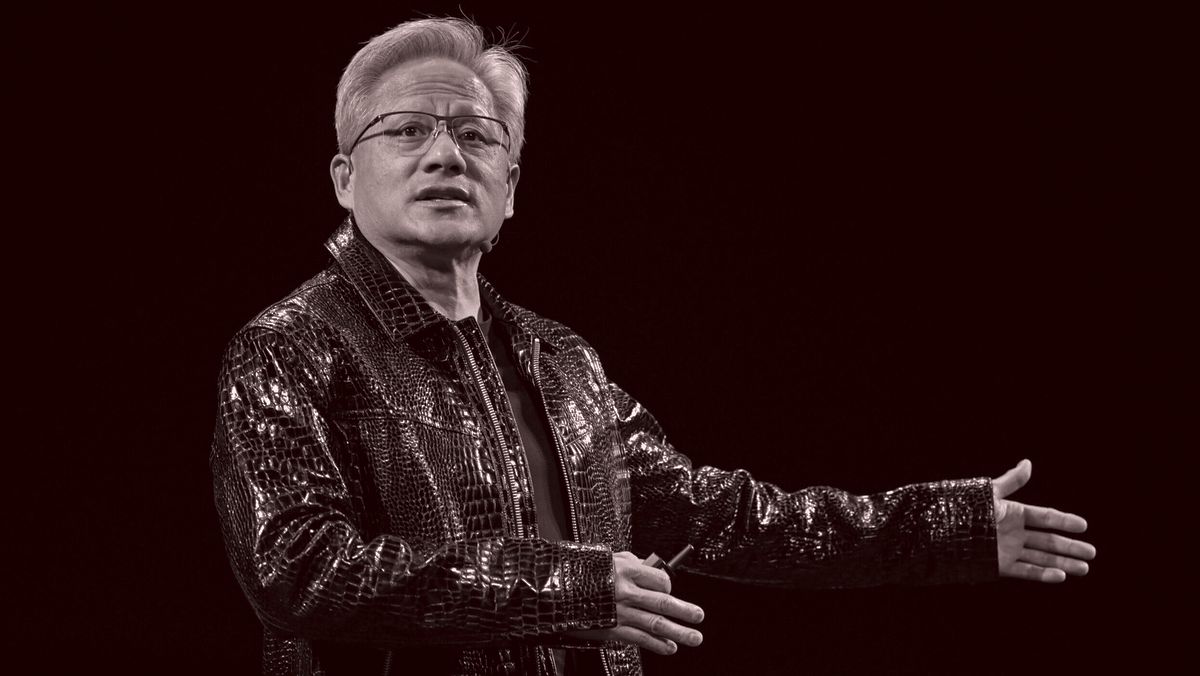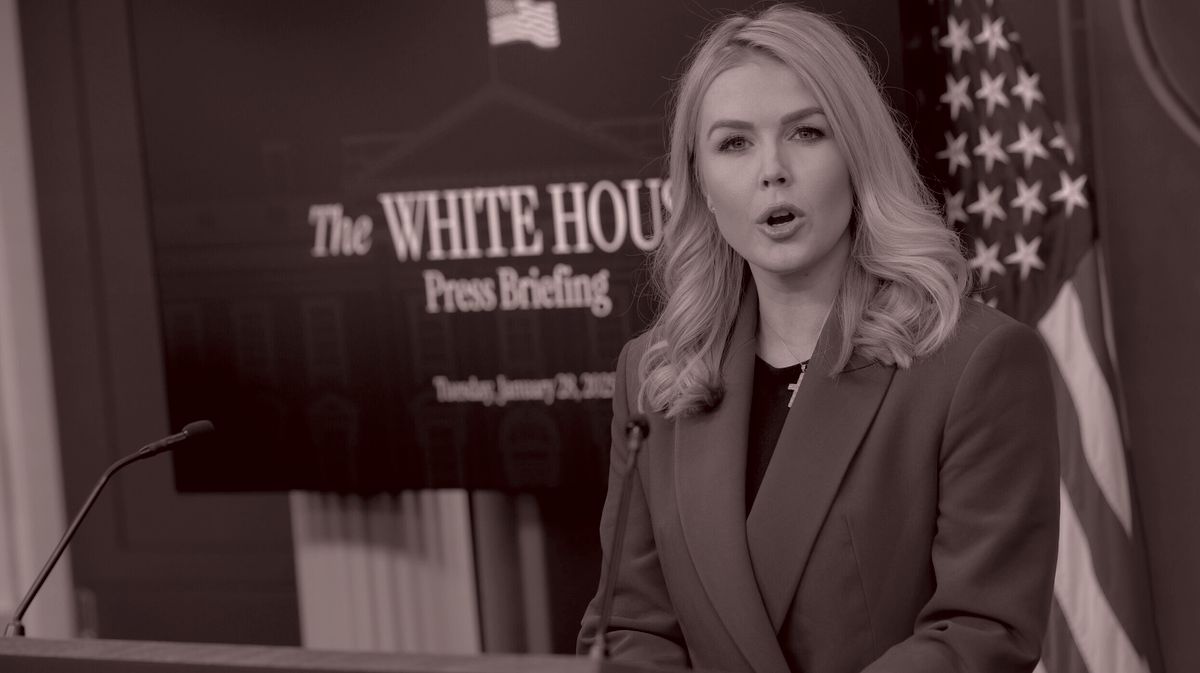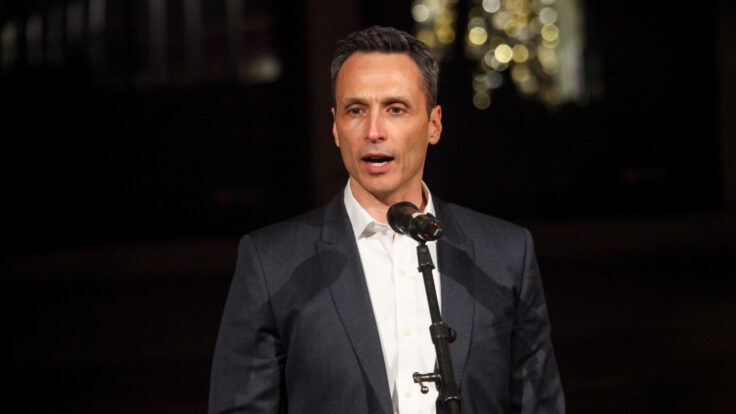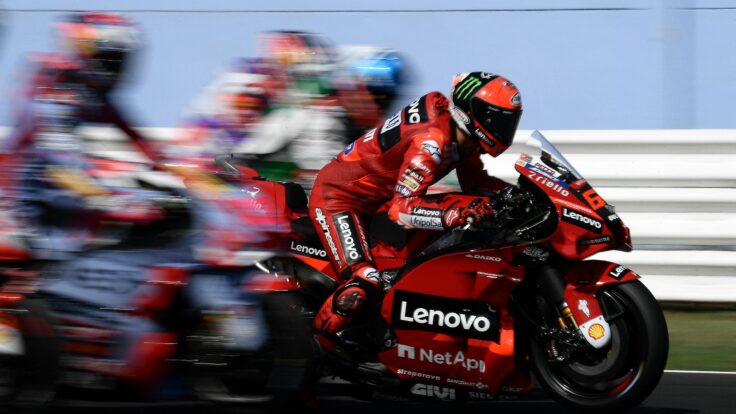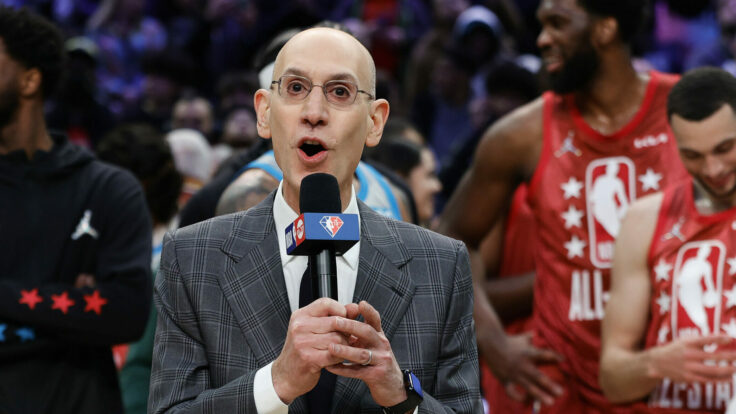Welcome back to The Varsity, my twice-weekly private email on
all of the deals being negotiated in the luxury suites and the courtside seats. As you know, the annual sports business trade show, also known as Super Bowl Week, is rapidly approaching. League officials, media executives, marketing leaders, and others generally consider New Orleans an ideal host city because it’s so walkable—it’s easy to putter back and forth between the hotels, the convention center, and the Caesars Superdome. Adventurous types will undoubtedly see
Marchand operating his rickshaw once again this year. (Andrew, it’s almost Gewürztraminer time. Please leave the petit fours by the door, and wait until I buzz you in. I don’t want to have to repeat myself!)
Pod alert: Be sure to listen to
yesterday’s Varsity podcast with Fox and NFL Network star Peter Schrager, who ticked through the biggest issues dominating New Orleans next week—the Chiefs fatigue sophistry, ratings, scheduling, etcetera. Shrages is one of the most plugged-in guys in league circles, and beloved by people in the trade. When he goes to dinner every Saturday with his Fox colleague Rob Gronkowski, autograph seekers and selfie groups circle his table and ask for pictures
with him.
This weekend, TNT Sports’ Stan Van Gundy will join the pod to talk about the changing business of the NBA. Like his brother, Jeff, Stan is an outspoken observer of the changes in the sport, and his lovable and curmudgeonly, Constanza-esque demeanor makes him a great conversation partner. Make sure you don’t miss the episode.
|
Player of the Week: Mark
Evans
|
Fox Sports’ ad sales chief has overseen what’s turning out to be the most lucrative Super Bowl
of all time, selling at least 10 ads for a record-high price of $8 million per 30-second spot, and increasing the average price for those units by a whopping half a million bucks each. When Lachlan Murdoch announced an ad sales sellout back in November, most of the spots fell short of that $8 million threshold, though Murdoch added at the time that Fox had set a record with its pricing. As it turns out, several advertisers, like State Farm, pulled out of the game in the wake of
the Los Angeles fires, enabling Evans to go back into the market and command higher rates.
|
Down to the J.V.: Roger
Goodell
|
During the Goodell era, the NFL has brilliantly found tactics
to eventize nearly every facet of its operations, and with great success. Last year, the draft drew 275,000 fans in Detroit—a city with barely 650,000 residents—and 14 million TV viewers on its first day. The league has turned its annual scouting combine into a multiday TV show. The league has even managed to transform the release of its annual game schedule into a media event. And it has morphed its awards presentation into the sort of event that the ESPYs always tried, and largely
failed, to execute.
But, for whatever reason, Goodell and the league have not been able to figure out the Pro Bowl, which ESPN will carry this Sunday. The Pro Bowl has always been something of a challenge, of course. In the old days, the players phoned it in, occasionally hungover from a week hanging out in Maui. And the league was generally sensitive to the fact that no one wanted to risk a significant injury in a meaningless game—a lesson learned the hard
way after the horrific Robert Edwards injury in the 1999 “Rookie Beach Bowl,” a prelude to that year’s Pro Bowl.
And then there was the attrition, both from players nursing injuries and those with emotional bruises from playoff losses. This trend hit its nadir in 2022, when Ravens backup quarterback Tyler Huntley was named as an alternate for the game. This year, close to two dozen players passed on attending, including stars like Josh Allen,
Lamar Jackson, T.J. Watt, and CeeDee Lamb, causing future Hall of Famer J.J. Watt to mock this year’s game, posting on X: “When you get 5 alternates deep, just call it the Participation Bowl.” The league needs to fix this.
|
- The streaming conundrum: Many of the headlines coming out of this morning’s Comcast Q4 earnings call focused on Peacock. Comcast tried to put a silver lining on the streaming business, whose top executive exited the company earlier this month, noting that Peacock saw a 16 percent jump in subscribers to 36 million and a 46 percent increase in annual revenue to $4.9 billion. It lost $372 million for the quarter, but that was less than half of the
carnage it posted a year ago. Others were less kind, signaling that Peacock has become a money pit that faces a brutal and uncertain future. To wit: LightShed’s Rich Greenfield sent a note this morning that Peacock has lost more than $9 billion since its launch, “and is projected to lose over $1 billion this year, as sub growth slows and NBA costs kick in.”
Greenfield also pointed out that Peacock won’t carry the NBA playoffs until 2026, which won’t help the streamer this
year. “Additionally, Q4 2025 will face increased sports programming costs with the introduction of national games that previously drew modest viewership on basic cable,” Greenfield wrote. “Comcast and NBCU appear committed to Peacock as part of a ‘broadcast + streaming’ strategy, which could imply they do not believe Peacock on its own will ever have robust profits.” Meanwhile, TD Cowen’s Doug Creutz released a report advising traditional media companies to exit the
direct-to-consumer streaming business and look to sell their programming to others. “Standalone O.T.T. is fundamentally the wrong business model for TV,” he wrote.
- The changing face of media: As noted above, Peter Schrager joined the Varsity podcast yesterday to discuss the significant business issues facing the NFL, from falling playoff viewership to cord-cutting. I was most interested, though, in hearing about his encounters
with fans. Every weekday morning, Schrager is on the NFL Network’s Good Morning Football, and every weekend he’s on Fox’s NFL pregame show. But he confessed that his fans know him best from his appearances on new media platforms, like Bill Simmons’s podcast, Barstool’s Pardon My Take, and Pat McAfee’s broadcast. “Football can still be the most popular game without it being directly tied to ratings from a Fox, CBS, or NBC broadcast,”
Schrager told me. “I know that’s where the NFL makes its media deals, but it’s not just coming from your traditional mainstream media.”
- Greg Olsen speaks: Tom Brady, The Varsity’s favorite $37.5 million man, may be about to call his first Super Bowl, but it’s the guy he replaced who’s been in the headlines this week. Greg Olsen sat down with The Charlotte Observer and The Athletic to talk about
life as the GOAT’s understudy. “It sucks,” he told the Observer’s Scott Fowler. “It’s pretty clear that the path, the upward trajectory as far as Fox goes, probably is a nonfactor.” When The Athletic’s Joseph Person asked whether he resents Brady and Fox, Olsen said, “I don’t think resentment’s probably
accurate. But I also think it’s not too far off, if I’m being honest. I don’t have any ill will.”
There have been hints throughout the playoffs that Olsen was chafing at his demotion to Fox’s number two broadcast team. Just before Brady’s playoff debut, Olsen posted a link to Awful Announcing’s hierarchy of NFL broadcast booths, which ranked him and Joe
Davis first, and placed Kevin Burkhardt and Brady 14th—a sophomoric move. He also retweeted a comment saying that “Greg Olsen is better than Tom Brady at talking football on television.” For good measure, he posted several items of his own analysis during Brady’s game.
As I wrote on Monday, Olsen doesn’t have a lot of options. Brady is wrapping up his
first year of a 10-year deal, and has made it clear that he plans to honor the contract. “I don’t know what the future holds,” Olsen said. “I enjoy working at Fox. Fox has been very good to me. I’ve been very honest with them that I’m not content just calling one o’clock regional games for the rest of my career.” Olsen still has two years left on his deal. And the top analysts at other networks (Collinsworth, Aikman, Romo,
Herbstreit) still have multiple years left on theirs.
- MLS expansion: The most frequent gripe that I’ve heard about MLS’s 10-year, $2.5 billion deal with Apple coalesces around the lack of transparency. Neither Apple nor MLS are open about the audience size for any of these games, leaving the broader sports business community in the dark about the deal’s success.
Another oft-heard complaint is that the Apple deal,
which puts almost every game on Apple TV+, has hurt the league’s efforts to draw in casual fans. After all, Apple TV+ consistently ranks at the low end of the streamers—more on par with ESPN+ at around 25 million, and well below even Peacock’s 36 million. MLS has tried to reach bigger audiences by cutting deals with Fox to carry occasional games on both its broadcast channel and FS1. But without a significant rights deal of its own, Fox has been reluctant to invest a lot of marketing spend
behind those games.
Yesterday, MLS took a more meaningful step toward attracting those casual audiences by allowing its MLS Season Pass to be sold through both DirecTV and Comcast. This marks the first time since the deal kicked off that Season Pass will be available outside of Apple TV+ for $14.99 per month, or $99 for the full season.
- The high price of celebrity warfare: My partner Eriq Gardner tells a
great story about Phillies controlling owner John S. Middleton’s son, John P. Middleton, and how he sued Roy Lee, the Hollywood producer behind films like The Departed and It. In a nutshell, Middleton Jr. felt like he didn’t get enough producer fees or credits from Lee, even though he let the producer use his Malibu mansion, his private jet, and his 50-yard-line seats at the Super Bowl. Eriq uncovers all the gory details,
including “Middleton’s debauched escapades with Leonardo DiCaprio and friends … the ‘black-out drunk’ rich boy stumbling through a glass door on a yacht, crying, and urinating in his pants in front of Lee’s business contacts; his alleged use of a security firm to tail a girlfriend who happens to be the daughter of New Hampshire Senator Jeanne Shaheen; and his donations to Donald Trump’s 2016 campaign.” There’s much more, including a judge
requiring Middleton to sell off his $10 million Hollywood Hills mansion. I encourage you to read it.
|
|
|
ESPN locked down its deal with the ACC, ensuring the league will avoid Pac-12
overreach problems and keep Clemson and Florida State in the fold. But the price ESPN paid proves its sports rights market is not a bonanza for everyone.
|
|
|
I forget: Was it Keynes or Friedman or
Hayek who offered the economic truism that not all sports leagues experience the platform shift to streaming equally? After all, the interest of Amazon Prime and Peacock helped the NBA run up an 11-year $76 billion deal. Meanwhile, the NFL is licking its chops to exercise an out from the $110 billion worth of rights-fees deals the league signed about four years ago, presumably hoping that current partners like Prime, Netflix, and YouTube TV create an unforeseen market for its
games. And then there’s the Pac-12. A couple of years ago, the historic league’s member presidents overestimated their economic value, passed on a linear TV deal from ESPN, and, in the end, were unable to find any deal at all, at least not at the level they wanted. Eventually, 10 of its 12 members left for other conferences.
I had this parable in mind this week, when I learned that ESPN exercised the option to extend its deal with the Atlantic Coast
Conference for nine more years at the same rate the conference agreed to back in 2016. (Given all the entanglements with ACC Network, it’s difficult to come up with a straight rights-fee number for this deal. But the deal was believed to be in the neighborhood of $240 million per year when it was first signed, back when the ACC had 14 schools. The conference now has 17 schools and launched the ACC Network back in 2019. But it’s the ACC’s rights fee, especially in comparison to the Big
Ten’s $1.1 billion per year average haul, that irritated some of the conference’s schools.) ESPN had until the end of this week to elongate the agreement, and decided to move forward after weeks of talks with the conference commissioner, Jim Phillips.
ESPN had all the leverage, of course. Bristol not only had the option in the deal, but it also owns and operates the ACC Network—a complexifier that would make a partnership
inconvenient and less attractive to another potential bidder. Given the amount of coordination required between a conference network and other linear TV partners about game selection and start times, such a scenario would have been untenable. Unsurprisingly, there’s no evidence that Phillips kicked the tires with any other mediaco to get a sense of the overall market as a way to wring a better deal out of ESPN.
He probably didn’t need to, either. Fox and ESPN dominate the market for college football media rights, and the overall realignment of the sport, while great for parity, has cleaved the leagues along financial lines between the haves (SEC and Big Ten) and have nots (everyone else). To wit: The Big Ten’s deal with Fox, CBS, and NBC allows the league to distribute nearly $100 million per year to each of its 18 member schools. And yet the new Pac-12 deal, with its new B-list teams, is back in
the market and likely to bring in Mountain West–style money. (ESPN and Fox have passed.)
Early on in these talks, ESPN had qualms about staying with the ACC, especially given that Clemson and Florida State, the conference’s biggest football brands, seemed itching to relocate to the SEC or Big Ten. At that point, the conference would basically be Bill Belichick’s UNC, SMU, Miami, and
a bunch of basketball schools. But my sources told me that ESPN’s fears were allayed by the fact that neither the Big Ten nor the SEC were really all that into Clemson or FSU. Both conferences already had teams in those markets, so why divide media revenue even more? Neither Clemson nor Florida State have reached a deal to ensure that they stay in the conference, but it’s hard to believe that ESPN would cut this type of deal without those assurances.
One other sweetener for ESPN: The ACC is committed to schedule its better teams (FSU, Clemson, The U) against Notre Dame, which is a league member for non-football sports. In the past, the Irish played lesser teams, such as Wake Forest, Pittsburgh, and Cal.
|
|
|
On using microchips to determine first downs:“The NFL’s competition committee
is slow on purpose… The league won’t do anything unless and until they find a way to package everything and sell it to a sponsor. You’ll note tech (in aggregate) is the league’s biggest category, so to say there is no momentum? I ain’t buying it any more than you would buy a used Yugo from Marchand…” —A sports business veteran
On MLB’s local streaming: “Your note on the Twins’ local media rights reads like they are the first team to cast their lot with MLB. Why no mention of the
Padres, Diamondbacks, Rockies, and how their production and distribution partnerships with MLB performed in 2024? Based on the published estimates I’ve seen, all three clubs took a massive haircut on their local media revenue. Given Rob Manfred’s cheerleading for the failure of the R.S.N. ecosystem, if there were any good news about the Padres, Diamondbacks, and Rockies, wouldn’t he be telling everyone about it? Is there something about the Minnesota market and fan base that
makes MLB think the Twins will outperform the NL West franchises media-wise?” —A Varsity subscriber
The Romo Meter?: “The analysis of Tom Brady by you and others is getting a bit overdone. I get it. He’s way overpaid and comes to the booth with a lot of baggage as an owner. But while everyone is obsessing about Brady, no one is talking about the significant deterioration in the CBS booth. Tony Romo has become impossible to listen to. He talks too
much and spews nonsensical comments every game. On Sunday, he said the Chiefs line is effective ‘because they play a lot of football together.’ If Brady said that, he would get lit up. I’d replace Romo with Olsen in a heartbeat. And as much as I love Nantz, he’s starting to sound old and tired. Calling 500 games is enough for one person. There’s great young talent out there. Nantz is best suited for golf. The only booth on Sundays he should be working at this point is the one at
the 18th green.” —A marketing executive
A message from my travel agent: “If you wanted to see an actual top-three national venue for watching college hoops (and easily the best in Indiana), you should’ve gone to see Maryland lose to Purdue in December. Mackey is consistently rated with Duke’s Cameron and Kansas’s Phog as top home courts advantages in the sport.” —A sales executive
|
Have a great weekend,
John
|
|
|
Finally, a media podcast about what’s actually happening in the media—not the oversanitized,
legal-and-standards-approved version you read online. Join Dylan Byers, Puck’s veteran media reporter, as he sits down with TV personalities, moguls, pundits, and industry executives for raw, honest, sometimes salacious conversations about the business of media and its biggest egos. New episodes publish every Tuesday and Friday.
|
|
|
An essential, insider-friendly Hollywood tip sheet from Matthew Belloni, who spent 14 years in the trenches at The
Hollywood Reporter and five before that practicing entertainment law. Subscribers also receive What I’m Hearing+, a companion email from Eriq Gardner focused on entertainment law, as well as weekly box office analysis from Scott Mendelson.
|
|
|
Need help? Review our FAQ page or contact us for assistance. For brand partnerships, email ads@puck.news.
You received this email because you signed up to receive emails from Puck, or as part of your Puck account associated with . To stop receiving this newsletter and/or manage all your email preferences, click here.
|
Puck is published by Heat Media LLC. 107 Greenwich St, New York, NY 10006
|
|
|
|
